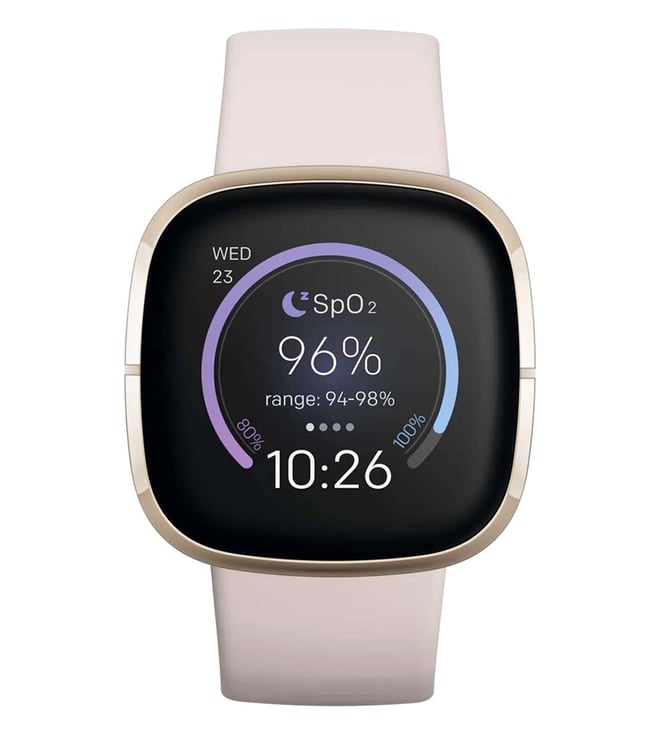Highlights
Holistic Health Focus—stress, sleep, and activity tracking
Google Cloud Advantage—enhanced insights
Simple and Intuitive—easy for all ages
Entry-Level Features—less for advanced users
Fitbit’s journey from pioneering activity trackers to becoming a leader in wearable wellness took a major turn when it joined the Google family. Now operating under Google’s umbrella, Fitbit has expanded its focus beyond simple step counting to embrace deeper health insights and integrated smart features. The influence of Google has brought enhancements in software integration and cloud-based health tracking, yet Fitbit remains committed to its core mission: making health tracking accessible to all. But how much of Fitbit’s original spirit remains as it evolves alongside its tech giant parent?
Product Selection
3.7 /5
Currently, Fitbit is proposing the Sense 2, Versa 4, and Ace LTE as options relative to the different use needs of the device. Fitbit Sense 2 takes care of advanced health tracking, the Versa 4 does a good balance of fitness companion tasks with smart features, while Ace LTE is designed for kids and creates safety security along with activity tracking. While Fitbit has fewer options unlike other brands with a wide product line, it has focused on health and wellness for different age brackets.
Affordability
4.3 /5
Fitbit has a limit price levels to fit more budgets: the Versa 4 starts around $200, hitting that sweet spot among features and fitness capabilities. The Sense 2's pricing is reasonable at $250, targeting users into advanced health tracking. The Ace LTE is even priced affordably for families at $230, bringing a great deal of focus to kids with features at much lower costs. The price of Fitbit is competitive, especially for users in need of reliable health tracking—without the premium cost of other brands.
Battery Life
3.7 /5
The Fitbit smartwatches boast a battery life of as much as 6 days, with fast charging that allows users to get a full day's use from just 12 minutes of charging. Fitbit says the Ace LTE has a multi-day battery that fits several days of normal use. While not as broad as some endurance-focused brands, the battery life on offer from Fitbit is second to none for those who value a mix of smart and fitness functionality.
Performance
4.0 /5
The Fitbit Sense 2 and the Versa 4 are optimized for seamless performance on Wear OS—a quick way to navigate and quickly access apps, which now includes Spotify for music control. Full health analytics are possible through the Fitbit app, while easy syncing is promised with other fitness apps. The Ace LTE puts its central focus on seamless connectivity with parents' phones for keeping safety and communication. While Fitbit comes in order to focus on performance speed but rather health and fitness, it merges with Google's services to extend valuable reasons for everyday users.
Design & Style
3.7 /5
Both Fitbit Sense 2 and Versa 4 feature a curved design with an AMOLED display for sharp visuals, yet are comfortable enough to wear all day. Interchangeable bands come in a number of flavors to let owners customize their look. The Ace LTE is more durably designed to withstand kids' daily rigors, in bright, fun colors, with tougher materials. Fitbit designs all of its devices for comfort and simplicity, therefore making them easily wearable and operable.
Build Quality & Durability
3.7 /5
The aluminum casing on the Sense 2 and Versa 4 gets protection from Corning Gorilla Glass, toughening it against daily usage. Both are resistant to water up to 50 meters and hence swim- and all-day wear-friendly. The Ace LTE comes in strong and sturdy to resist active play; it's kid-friendly. While Fitbit watches are designed to be worn daily, they're more about comfort than rugged outdoor use.
Health & Fitness Tracking
4.5 /5
Advanced health metrics such as ECG, EDA sensors for tracking stress, skin temperature monitoring, and detailed sleep analysis are included in the Fitbit Sense 2. With over 40 modes of exercise, the Versa 4 monitors heart rate, steps, and active zone minutes to optimize workouts based on a Daily Readiness Score. And Ace LTE will keep kids active by pushing them toward step-tracking challenges, while offering activity insight for parents. With Fitbit Premium, Fitbit's connectivity offers more personalized services to customers by offering them insight into their conditions and wellness guidance.
Smart Features & Connectivity
4.1 /5
Fitbit's smartwatches are Wear OS-powered, so the Sense 2 and Versa 4 feature support for Google Wallet, Google Maps, and smart assistants like Google Assistant or Amazon Alexa. They each boast Bluetooth and Wi-Fi for syncing with the Fitbit app, while NFC supports contactless payments. Real-time location tracking, along with SOS calling for kids' safety, is available on the Ace LTE. While the Fitbit ecosystem is more health and fitness-centric, it is far more enriched with smart capabilities, especially with Google integrations included in the mix.
Conclusion
As part of Google, Fitbit benefits from enhanced connectivity and cloud-based insights, offering users a more connected experience. Its focus on intuitive wellness tracking, including sleep monitoring and stress management, makes it a solid choice for those seeking user-friendly wearables. However, the transition under Google hasn’t fully closed the gap in areas like app ecosystem variety and advanced smartwatch capabilities, leaving some room for improvement. Despite these challenges, Fitbit’s combination of affordable health tools with Google’s tech expertise keeps it a relevant choice for users who prioritize health monitoring with a touch of smart convenience.





